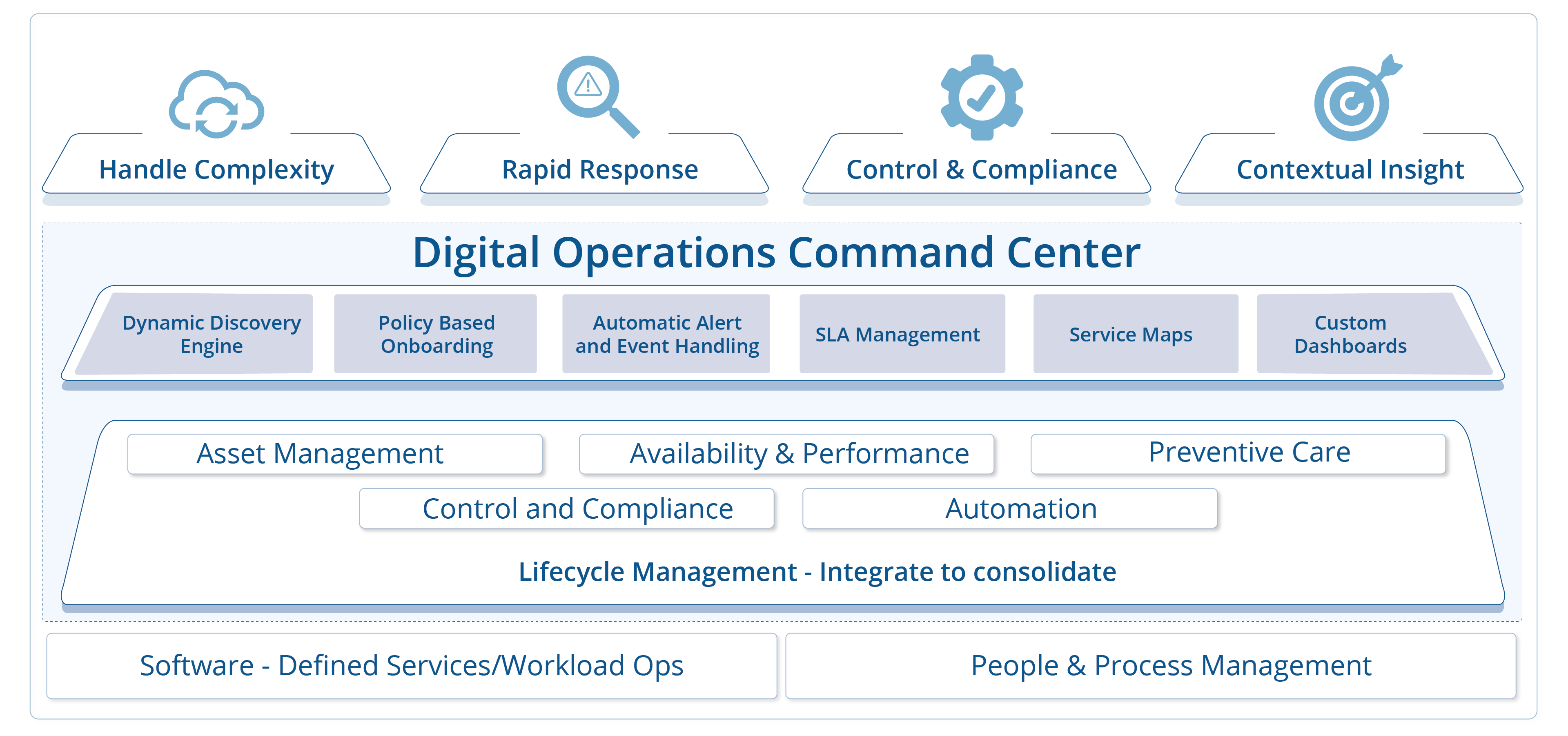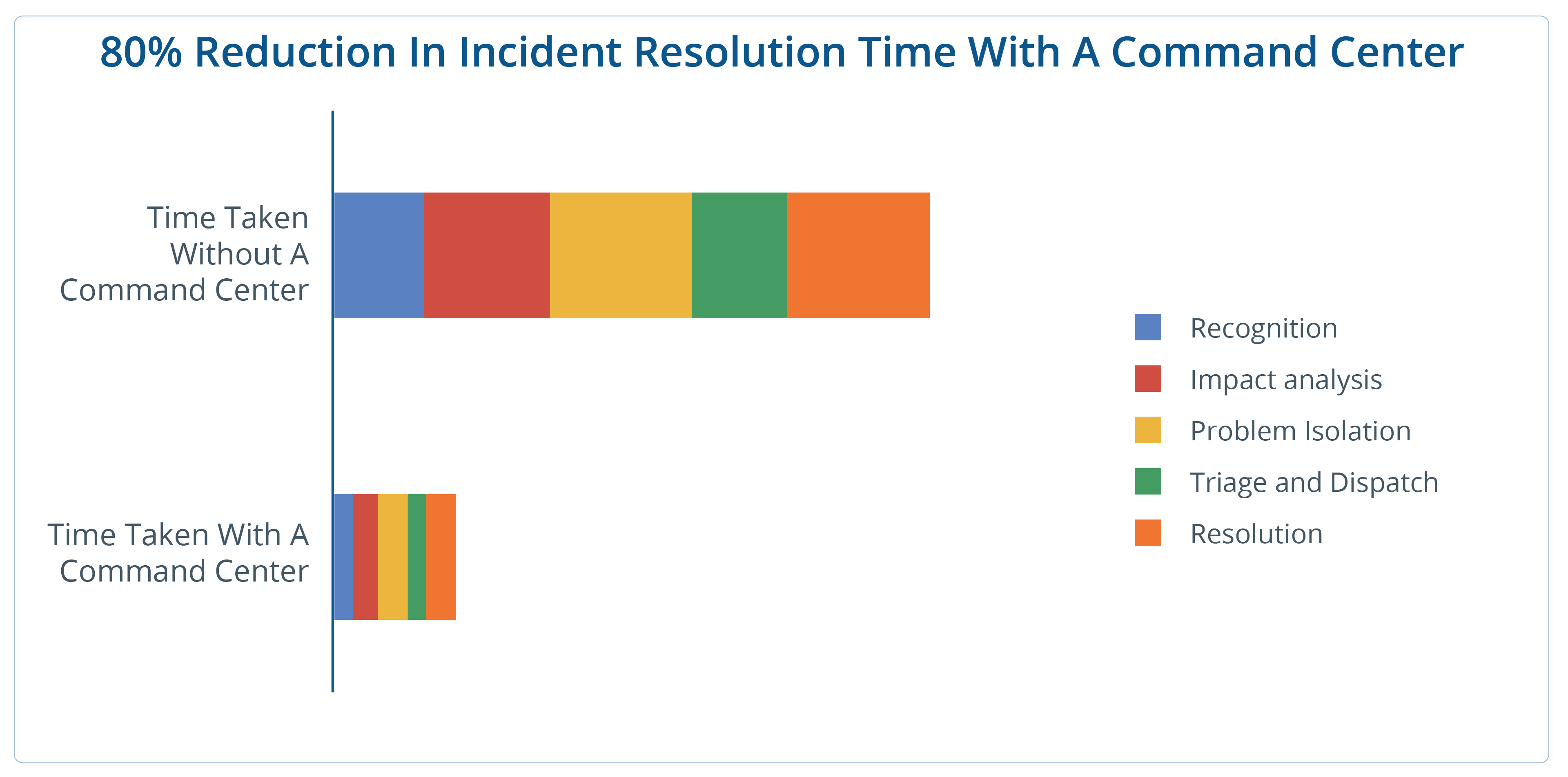"Prophecies and predictions they are not...the term forecast is strictly applicable to such an opinion as is the result of scientific combination and calculation."
- Admiral Robert FitzRoy, the first chief of the UK meteorological department
Before there was a UK Meteorological Office, farmers and sailors depended on superstition and folk wisdom (“the appearance of clouds or the behavior of animals”) to predict weather patterns. In 1854, Admiral Robert FitzRoy, a pioneering meteorologist shattered existing dogma by using scientific methods for daily weather predictions.
Admiral FitzRoy’s daily storm alerts saved countless lives at sea and helped create a public weather forecasting service. So, how does this relate to modern IT operations and more specifically, incident management for business-critical enterprise services?
The Trouble With Modern-Day Incident Management
New age IT services depend on distributed resources (datacenter and multi-cloud infrastructure), external third-party services (which rely on APIs) and shared enterprise services (like identity and access management). The customers of IT services are also distributed across different locations and business units.
To understand whether an IT service is up or down, you’ll need to piece together health and performance information across different service components. Unless you investigate and analyze different parts of the service, you won't be able to figure out the underlying issue. Here are some questions that incident management teams need to consider in the context of IT service delivery:
- What’s the most effective way of organizing and assessing if your IT service is performing properly or not?
- You've received alerts from different tools that might indicate a service failure. Do you have the right context to interpret and decide the impact to your service?
- If there are two IT services that depend on a common infrastructure resource, how do you contextualize event impact for each IT service?
Given that each IT operations team focuses on its own set of activities, today you need a watchtower to see and truly understand the big picture. The digital operations command center is a watchtower that sits above your existing tools stack and displays contextual information about your IT services. The command center is a flexible framework that lets you process information in a holistic way so that you understand what's going on in your IT environment and take the right action sooner. It provides visibility, intelligence and automation, while ensuring a healthy balance of governance and business unit agility.

Figure 1 - Drive rapid incident prioritization, response and restoration with a digital operations command center.
If you haven’t centralized your IT operations, you will not get a bird’s eye view of your IT services. A digital operations command center provides aggregation, interpretation, problem recognition, impact analysis, first response and dispatch for incident management activities. Working with a command center is like going from believing weather prophecies to using numerical climate prediction models.
Back To The Future With A Digital Operations Command Center
Without a national weather service, how do you know if the current climate you’re experiencing is a blip or part of a broader trend? Just like the weather bureau, the digital operations command center is an authoritative source of information that helps you answer the question: Is my IT service up or down?
To respond to an outage, you need the right coordination along with a systematic way to eliminate different possibilities. If there’s no centralized platform for incident resolution, everyone will start pointing fingers at the same time, leading to complete chaos. Unstructured incident analysis makes no sense when millions of dollars, corporate reputation and customer satisfaction are at stake.

Figure 2 - The command center drives faster mean time to acknowledgment and rapid restoration of services.
A digital operations command center isolates the root cause(s) of a service disruption to a particular time and space (set of resources). You not only can recognize, contextualize and isolate the problem, but also notify the right teams for resolution. While you can resolve an incident without a command center, you'll end up wasting time and effort through a convoluted and disorganized process.
Control The Incident Management Chaos With OpsRamp
OpsRamp's command center helps manage the health and performance of digital services by coordinating incident response across different teams. Just like how the national weather service is a neutral and dispassionate source of information, the OpsRamp platform optimally organizes incident response processes by cutting through the noise in a structured manner:
- Problem Recognition. Unified Service Intelligence delivers native monitoring for distributed and hybrid resources (on-prem and cloud-native environments). It also offers the right event context by ingesting alerts from other third-party monitoring tools.
- Impact Analysis. Understand what’s happening at a business-service level with Service Maps. Pinpoint root cause by understanding interdependencies between IT services and underlying infrastructure resources.
- Problem Isolation. Consolidate and compress raw alerts into context-infused events with our AIOps Inference Engine. You’ll be able to reduce noise and focus on the most important incidents that matter to your business.
- Triage and Dispatch. Escalation management routes relevant alerts to on-call staff using effective communication channels (email, voice, SMS and chat). If a particular technician doesn’t respond in time, alerts are automatically sent to the next available employee so that an incident doesn’t fall through the cracks.
- Resolution. Spin up remote consoles to securely access distributed infrastructure for incident analysis. You can also use automation management for remediation and resolution without any human intervention.
Next Steps:
- Learn how you can deliver IT operations as a service for scalable and efficient service delivery.
- Check out 451 Research’s report on how OpsRamp delivers “end-to-end, holistic IT management platform for heterogeneous environments.”
- Schedule a custom demo with an OpsRamp solution expert.






